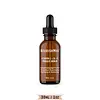What's inside
What's inside
 Key Ingredients
Key Ingredients

 Benefits
Benefits

 Concerns
Concerns

 Ingredients Side-by-side
Ingredients Side-by-side

Aloe Barbadensis Leaf Water
MaskingWater
Skin ConditioningButylene Glycol
HumectantBrassica Oleracea Acephala Leaf Extract
HumectantGlycolic Acid
Buffering1,2-Hexanediol
Skin ConditioningPotassium Hydroxide
BufferingGlycerin
HumectantSpinacia Oleracea Leaf Extract
Skin ConditioningCarum Petroselinum Extract
Skin ConditioningChlorella Minutissima Extract
Skin ConditioningMalus Domestica Fruit Extract
AntioxidantPanthenol
Skin ConditioningBetaine Salicylate
AntimicrobialSodium Hyaluronate
HumectantAllantoin
Skin ConditioningCamellia Sinensis Seed Oil
HumectantDipotassium Glycyrrhizate
HumectantBacillus/Folic Acid/Soybean Ferment Extract
Skin ConditioningCoptis Japonica Root Extract
Skin ConditioningMalachite Extract
AntioxidantPolysorbate 80
EmulsifyingDisodium EDTA
Aloe Barbadensis Leaf Water, Water, Butylene Glycol, Brassica Oleracea Acephala Leaf Extract, Glycolic Acid, 1,2-Hexanediol, Potassium Hydroxide, Glycerin, Spinacia Oleracea Leaf Extract, Carum Petroselinum Extract, Chlorella Minutissima Extract, Malus Domestica Fruit Extract, Panthenol, Betaine Salicylate, Sodium Hyaluronate, Allantoin, Camellia Sinensis Seed Oil, Dipotassium Glycyrrhizate, Bacillus/Folic Acid/Soybean Ferment Extract, Coptis Japonica Root Extract, Malachite Extract, Polysorbate 80, Disodium EDTA
Water
Skin ConditioningEthoxydiglycol
HumectantAscorbic Acid
AntioxidantPropylene Glycol
HumectantGlycerin
HumectantLaureth-23
CleansingTriethanolamine
BufferingTocopherol
AntioxidantFerulic Acid
AntimicrobialPanthenol
Skin ConditioningSodium Hyaluronate
HumectantSodium PCA
HumectantNiacinamide
SmoothingPhenoxyethanol
PreservativeEthylhexylglycerin
Skin Conditioning
 Reviews
Reviews

Ingredients Explained
These ingredients are found in both products.
Ingredients higher up in an ingredient list are typically present in a larger amount.
Glycerin is already naturally found in your skin. It helps moisturize and protect your skin.
A study from 2016 found glycerin to be more effective as a humectant than AHAs and hyaluronic acid.
As a humectant, it helps the skin stay hydrated by pulling moisture to your skin. The low molecular weight of glycerin allows it to pull moisture into the deeper layers of your skin.
Hydrated skin improves your skin barrier; Your skin barrier helps protect against irritants and bacteria.
Glycerin has also been found to have antimicrobial and antiviral properties. Due to these properties, glycerin is often used in wound and burn treatments.
In cosmetics, glycerin is usually derived from plants such as soybean or palm. However, it can also be sourced from animals, such as tallow or animal fat.
This ingredient is organic, colorless, odorless, and non-toxic.
Glycerin is the name for this ingredient in American English. British English uses Glycerol/Glycerine.
Learn more about GlycerinPanthenol is a common ingredient that helps hydrate and soothe the skin. It is found naturally in our skin and hair.
There are two forms of panthenol: D and L.
D-panthenol is also known as dexpanthenol. Most cosmetics use dexpanthenol or a mixture of D and L-panthenol.
Panthenol is famous due to its ability to go deeper into the skin's layers. Using this ingredient has numerous pros (and no cons):
Like hyaluronic acid, panthenol is a humectant. Humectants are able to bind and hold large amounts of water to keep skin hydrated.
This ingredient works well for wound healing. It works by increasing tissue in the wound and helps close open wounds.
Once oxidized, panthenol converts to pantothenic acid. Panthothenic acid is found in all living cells.
This ingredient is also referred to as pro-vitamin B5.
Learn more about PanthenolSodium Hyaluronate is hyaluronic acid's salt form. It is commonly derived from the sodium salt of hyaluronic acid.
Like hyaluronic acid, it is great at holding water and acts as a humectant. This makes it a great skin hydrating ingredient.
Sodium Hyaluronate is naturally occurring in our bodies and is mostly found in eye fluid and joints.
These are some other common types of Hyaluronic Acid:
Learn more about Sodium HyaluronateWater. It's the most common cosmetic ingredient of all. You'll usually see it at the top of ingredient lists, meaning that it makes up the largest part of the product.
So why is it so popular? Water most often acts as a solvent - this means that it helps dissolve other ingredients into the formulation.
You'll also recognize water as that liquid we all need to stay alive. If you see this, drink a glass of water. Stay hydrated!
Learn more about Water